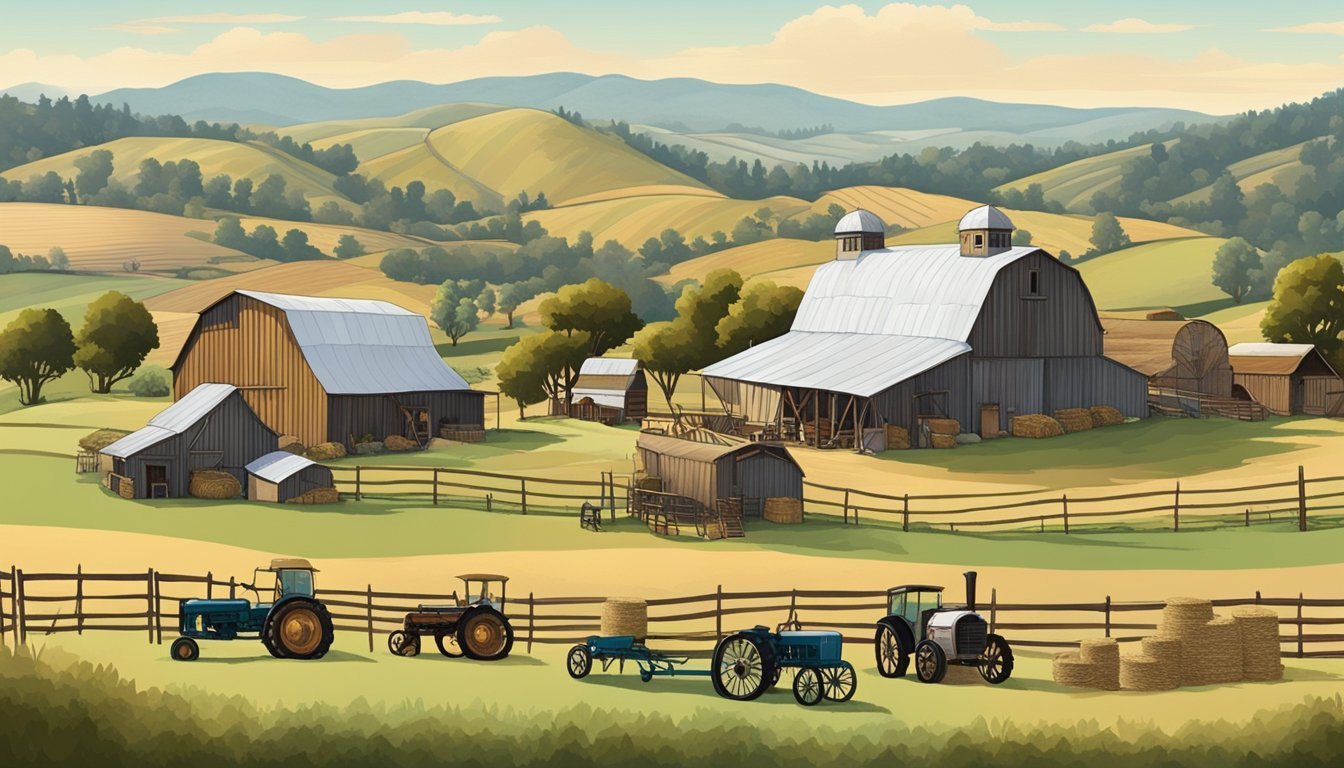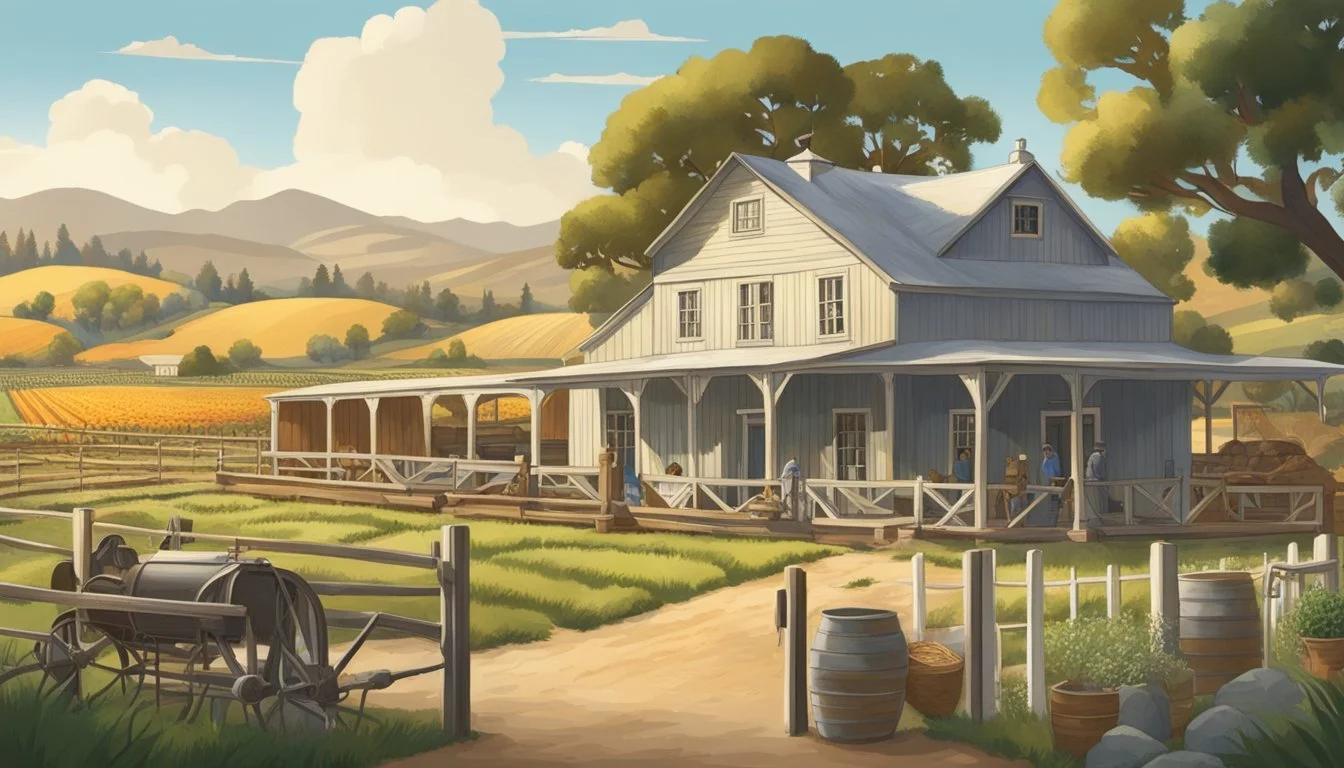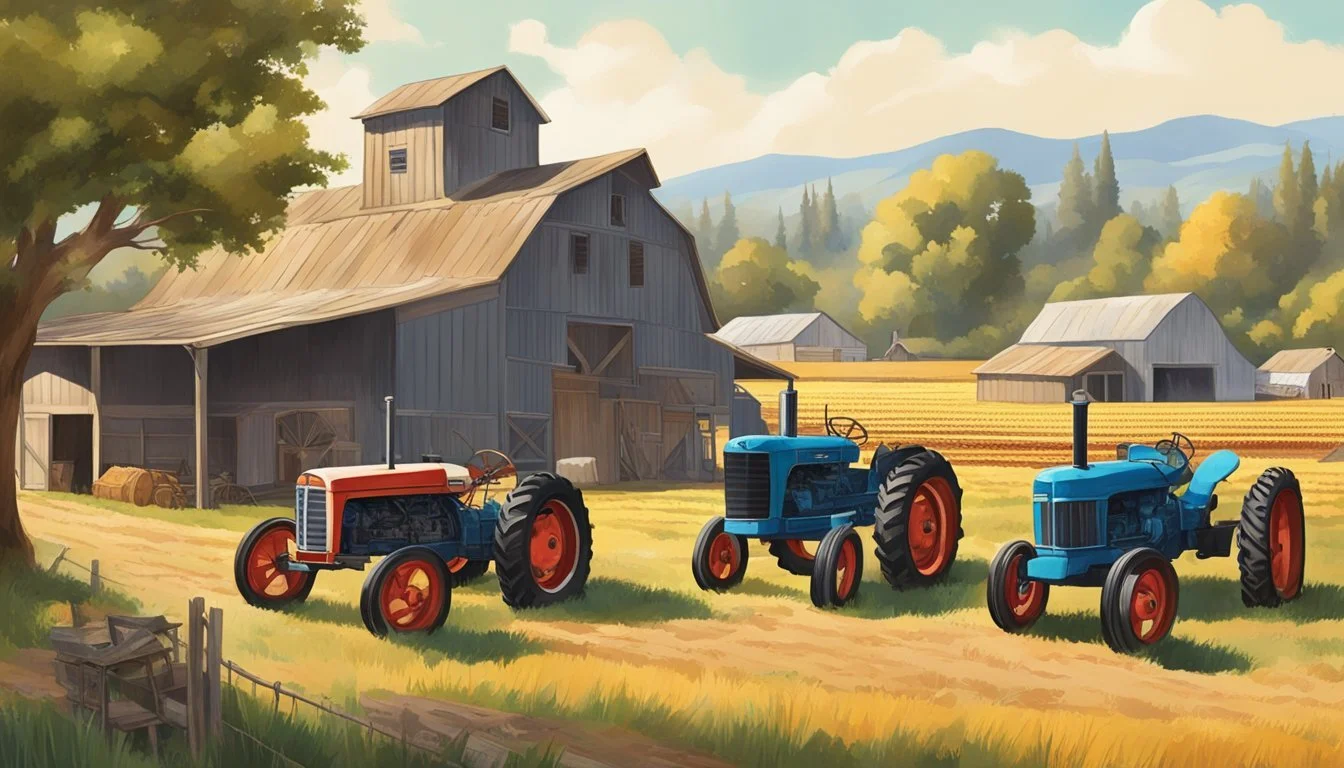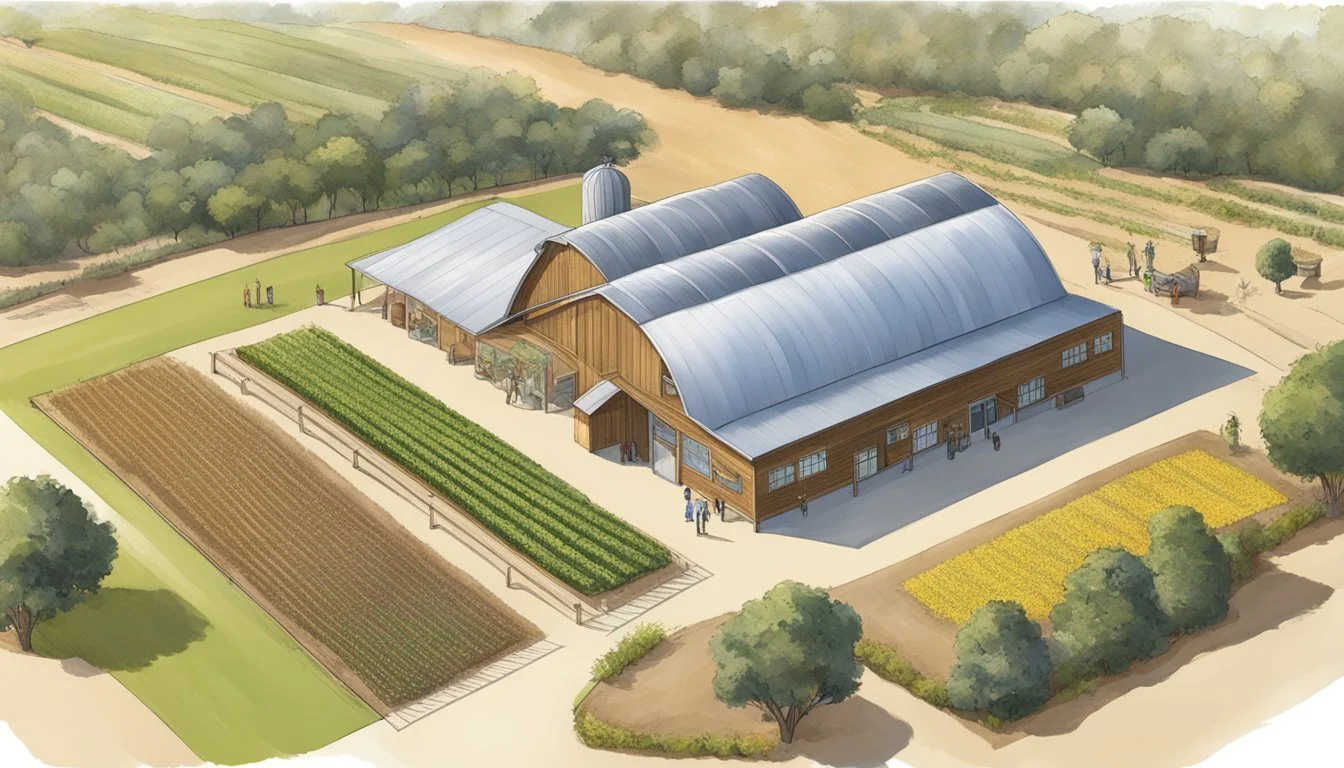Historical Farms and Agricultural Museums in California
Exploring the Golden State's Agrarian Heritage
California's rich tapestry of history and culture is deeply entwined with its agricultural heritage. From the Gold Rush that reshaped the state's destiny to the modern era, agriculture has remained at the forefront of its economic and cultural identity. Historical farms and agricultural museums scattered across the Golden State offer a window into this past, preserving the tools, traditions, and tales of the region's farming and ranching milestones. They serve as custodians of the stories that illustrate how California emerged as a powerhouse in the agriculture industry, influencing food production and agricultural practices across the globe.
In places like Woodland, the California Agriculture Museum provides an immersive look into the state's farming evolution, boasting collections like the Heidrick Tractor Collection that highlight technological progress since the 1930s. Meanwhile, the contributions of various cultural groups, including those from Asia, are spotlighted in venues such as the museum that charts the History of Farm Labor and Agriculture in Tulare County, acknowledging the diverse fabric of labor that supports California's agricultural might.
These institutions are more than mere repositories of antiquated equipment; they are living entities that educate and inspire. They reveal the transformation of agriculture from manual to mechanized means, fostering an understanding of the sector's impact on society. As these museums recount the chronicles of California's agricultural saga, they also invite introspection on the ecological and economic challenges that persist today.
Historical Significance of Agriculture in California
California's agricultural history is deeply intertwined with its cultural heritage and socio-economic development, shaping the state into a leading agricultural force in the United States. From the early influence of indigenous practices to the rush for gold that propagated agricultural expansion, these dynamics form the bedrock of modern California's agricultural landscape.
The Gold Rush Era and Farming
During the Gold Rush era, the sudden influx of settlers in California significantly impacted local farming. While many were drawn to the state by the allure of gold, the booming population required sustenance, leading to a swift increase in farming activities. Agriculture became the necessary support system for mining communities. As mining declined, many found that the fertile soil and favorable climate of regions like the Sacramento Valley were well-suited for crop cultivation, thereby transitioning to life as farmers, fundamentally altering California's economic fabric.
The Yokuts and Early Farming Practices
The Yokuts, indigenous to California's central valley, had established sophisticated farming practices that informed early agricultural methods in the region. They cultivated a variety of crops, managing the land with an intimate understanding of the seasons and native plant species. These early practices laid the groundwork for sustainable agriculture and highlighted the importance of indigenous knowledge in managing California's diverse ecosystems—a key component in the cultural heritage of the state's farming history.
Growth of the Agriculture Industry
Post-Gold Rush, innovation and infrastructure, such as the development of the Transcontinental Railroad, transformed California agriculture, facilitating the industry's significant growth. The introduction of irrigation systems and advanced farming equipment enabled the state to boost production and transport goods efficiently, attracting investment and labor. The growth of California's agriculture catalyzed its position as a powerhouse in the U.S. economy, with institutions like the California Agriculture Museum preserving this rich history. The museum illustrates pivotal moments that cemented the state's reputation as a leader in diverse agricultural outputs, from wine to almonds.
Agricultural Museums and Historical Farms Overview
California's rich agricultural history is celebrated and preserved through a collection of dedicated museums and historical farms. These institutions serve as important cultural heritage sites that showcase the state's diverse farm history, agricultural equipment, and embody the living history movement.
California Agriculture Museum
The California Agriculture Museum, located in Woodland, boasts an extensive collection of tractors and agricultural equipment. They hold a treasure trove of artifacts that highlight the technological advancements in farming. As the largest museum of its kind in the state, it plays a critical role in educating the public about California's agricultural past.
Association for Living History
The Association for Living History, Farm and Agricultural Museums (ALHFAM) promotes the practice and appreciation of agricultural and historical preservation. This organization supports and enhances the capabilities of those involved in living historical farms and agricultural museums in California and beyond, nurturing the exchange of information among its members.
Local Farm Museums
California hosts numerous local farm museums, each displaying unique exhibits that reflect the specific agricultural practices and cultural narratives of their regions. These establishments often feature restored farmhouses, demonstrations of farming techniques, and annual events that help visitors connect with California's agrarian roots.
Cultural and Educational Activities
The agricultural sector in California is rich with history and culture, offering a variety of educational activities that cater to learners of all ages. These activities provide an immersive experience into the agricultural heritage of the state.
Educational Tours
California Agriculture Museum in Woodland offers in-depth educational tours that showcase the evolution of farm machinery and its impact on agriculture. Visitors can explore the Heidrick Tractor Collection and learn about the science of farming. Tour schedules are available on the museum's website, allowing school groups and the community to book visits during museum hours.
Festivals and Community Events
Throughout the year, the museum hosts festivals and events that bring the community together to celebrate California's agriculture. From farm-to-fork events to seasonal harvest festivals, these gatherings are not only a venue for entertainment, but also serve as a platform for education and cultural exchange.
Living History Demonstrations
Living history demonstrations at the museum offer a glimpse into the past through reenactments and interactive exhibits. These activities allow visitors to fully engage with the historical aspects of farming, bringing to life the skills and methods used in traditional agriculture. It's a unique opportunity to appreciate the state's cultural heritage and the contributions of generations of farmers who have shaped California's agricultural landscape.
Preservation and Exhibition
Preservation and exhibition in California's agricultural museums involve meticulous curation of historical artifacts and equipment that showcase the state's agricultural heritage. Visitors can expect a diverse display that ranges from small tools to large machinery, reflecting the evolution of farming practices over the years.
Artifacts and Equipment Collection
The California Agriculture Museum hosts an extensive array of artifacts, offering insights into the bygone era of farming. These items include everything from hand tools, garments, and household goods, to larger equipment essential for early agricultural efforts. They represent not just the history of farming, but also the social and economic contexts in which these practices developed.
Tractors and Combines Exhibits
The centerpiece of the machinery collections are often the tractors and combines, some dating back to the early 20th century. The California Agriculture Museum features tractors that have been meticulously restored, demonstrating the technological advancements that have shaped agriculture. These machines are presented not just as exhibits, but as historical documents that tell the story of innovation in California's farming.
Vintage Trucks and Agricultural Machines
In addition to tractors, more specialized vehicles such as vintage trucks are on display. They highlight the transportation evolution alongside agricultural advancements. California's rich history of farming is further detailed through the exhibition of other agricultural machines, which delineate a timeline of progress essential to the state's economic success. Visitors can expect to see a wide range of equipment representative of different eras and technologies.
Visitor Information
Visiting California’s agricultural museums offers insight into the deep roots of farming and the community’s commitment to preserving this history. These institutions provide a detailed look at agricultural progress from past to present, with ample opportunities for education and involvement.
Hours of Operation and Admission Details
California Agriculture Museum: Open Wednesday to Saturday from 10 am to 4 pm. Admission is $10 for adults, $5 for children aged 5 to 12, and free for those under 4. Seniors (65+) and students with ID can enter for $8.
Museum of Ventura County's Agriculture Museum: Open Tuesday to Sunday, from 10 am to 4 pm. General admission is $5; seniors, students, and educators are $3; members and children under 5 enter free.
Parking and Accessibility
Parking facilities are available at both locations. At the California Agriculture Museum, parking is free and accessible for all visitors. The Museum of Ventura County's Agriculture Museum provides parking close to the entrance with designated spaces for disabled visitors to ensure convenient access.
Membership and Support Options
Members play a vital role in sustaining these museums. Membership options are diverse, with individual, family, and corporate levels typically providing unlimited free admission, gift shop discounts, and invitations to special events.
California Agriculture Museum offers memberships starting at $50, which includes reciprocal benefits to over 1,000 institutions through the Time Travelers program.
Museum of Ventura County offers a range of membership levels starting at $40 annually, extending benefits like exclusive previews and educational resources, with an emphasis on community engagement and support.
Modern Agriculture and Sustainability
Modern agriculture in California is a dynamic industry, embracing technology and sustainability methods to meet the challenges posed by climate change and an evolving food system.
Changes in the Agriculture Industry
The agriculture industry in California has seen a significant shift towards sustainable practices. Farmers are implementing advanced technologies such as drip irrigation and precision farming. These strategies help to conserve water and reduce chemical usage. In addition, there's an increasing adoption of renewable energy sources like solar power to fuel operations.
The Impact of Climate on Farming
Climate plays a critical role in farming. As California experiences more erratic weather patterns, farmers are adapting to these changes by selecting drought-resistant crops and modifying planting schedules. Sustainable farms in California are becoming models for agriculture, demonstrating how to lessen agriculture’s carbon footprint and enhance biodiversity, as noted by KQED.
Contemporary Farming and Food System
Today's food system in California is intricately linked with sustainable farming methods. Community-supported agriculture (CSA) programs are on the rise, strengthening the direct bond between growers and consumers. They are crucial for the survival and prosperity of small-scale farmers, as they provide a platform for selling produce directly to local communities. This shortens the supply chain and contributes to a more resilient food system.







